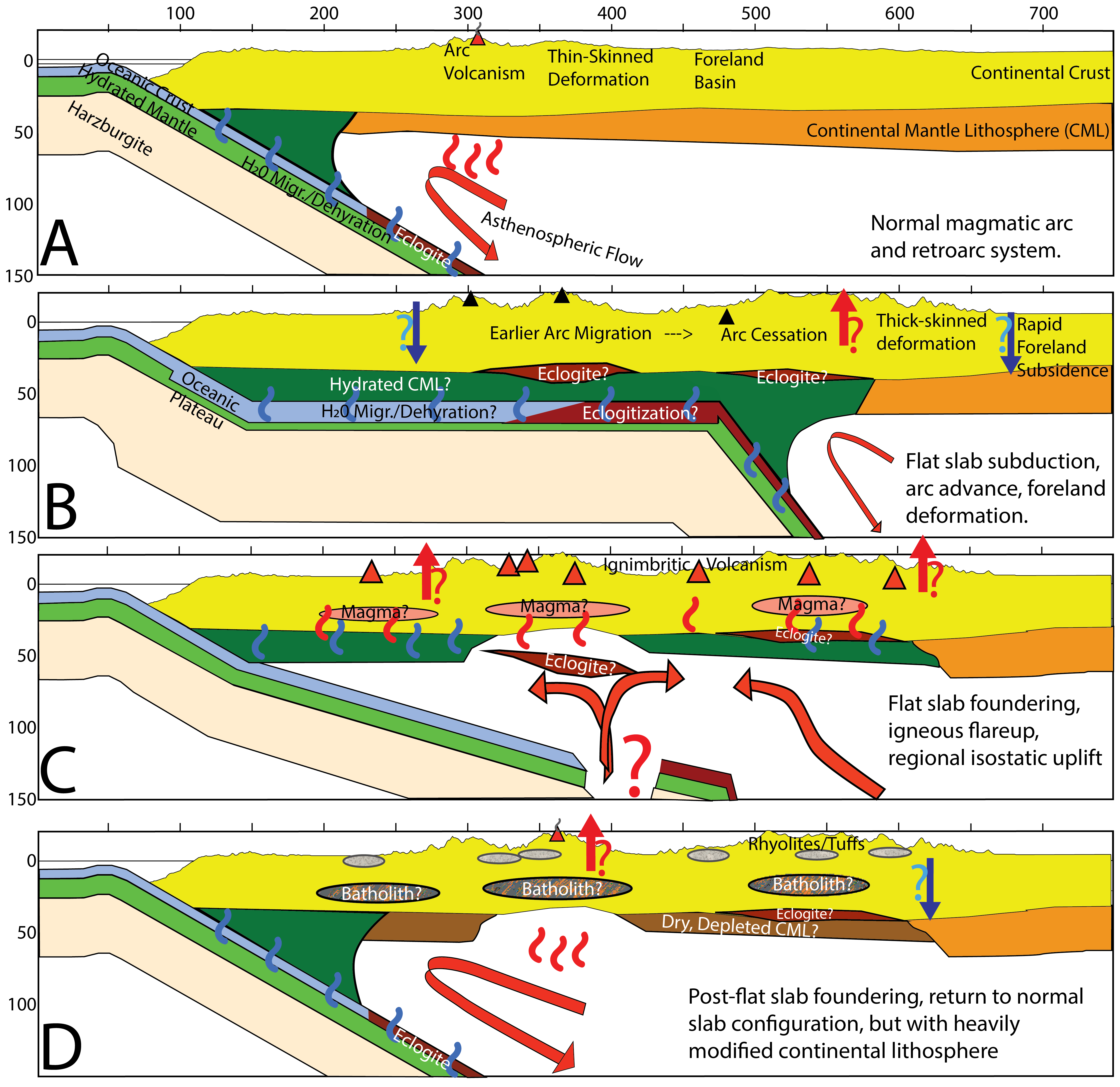This project will expand our understanding of how a specific tectonic setting, flat slab subduction, affects the continents on which we live. Flat slab subduction occurs when an oceanic plate that normally descends into the Earth’s mantle at a constant angle of dip changes its geometry and instead sinks only to ~50 miles depth and then travels horizontally for hundreds of miles beneath the continent before returning to the deep Earth’s interior. An episode of flat slab subduction beneath the western United States is believed to be responsible not only for the formation of the Rocky Mountains and the extensive ore deposits of the Colorado Mineral Belt, but also for wide spread explosive volcanism that erupted ~500,000 km3 of silicic magma across the western United States between 36 and 18 million years ago (Mt. St. Helens erupted ~1 km3 for comparison).
This volcanism is believed to be due to the effects of the removal of the flat slab and the resumption of a normal subduction geometry, but it has been difficult to study because of the amount of time that has passed since this occurred in the western United States, and because of uncertainty about the geometry of the flat slab that existed before that. In Colombia, we have found a unique setting where a once extensive flat slab has split into two parts, one of which remains flat, and one that has comparatively recently foundered and returned to a normal subduction geometry. While this flat slab is much smaller than the one that affected the western United States, we can study the processes responsible for the mountain building, ore deposits, and volcanic hazards in Colombia to gain a better understanding about how continents evolve over time and how these types of volcanic events are related to this specific tectonic environment.

